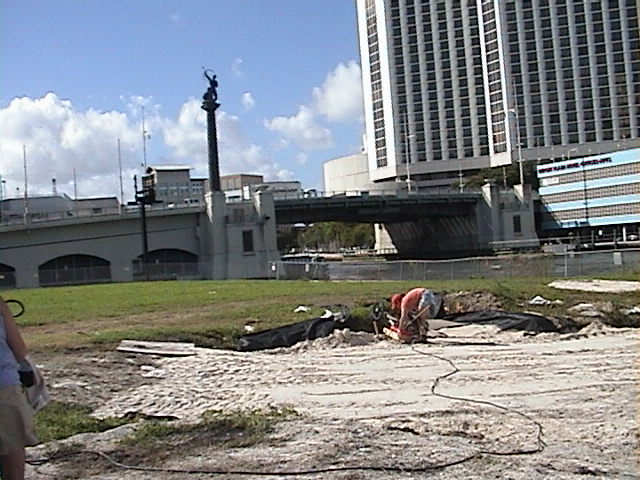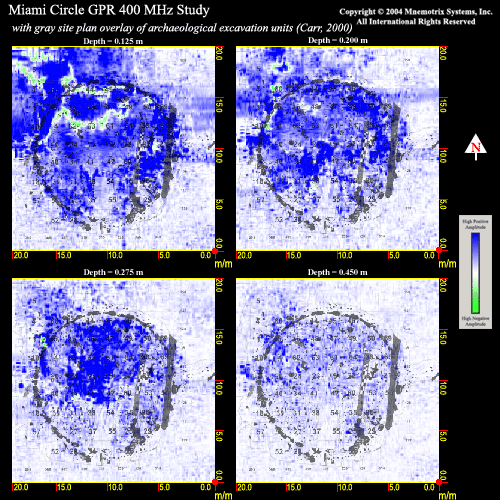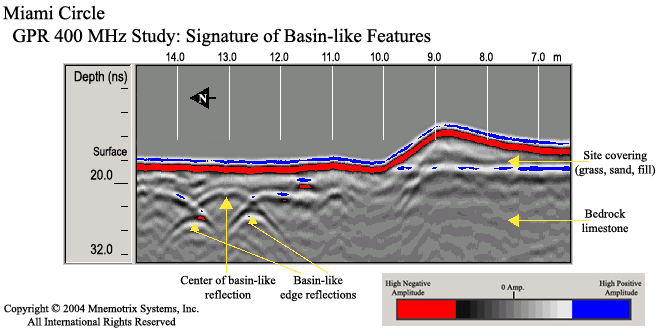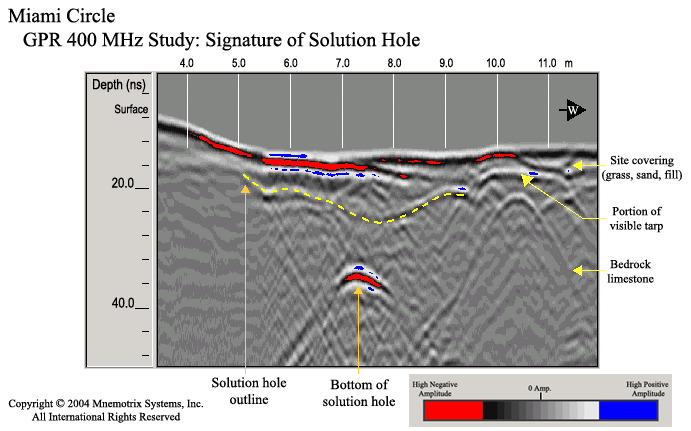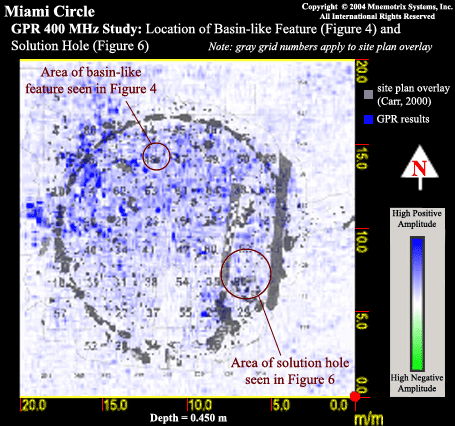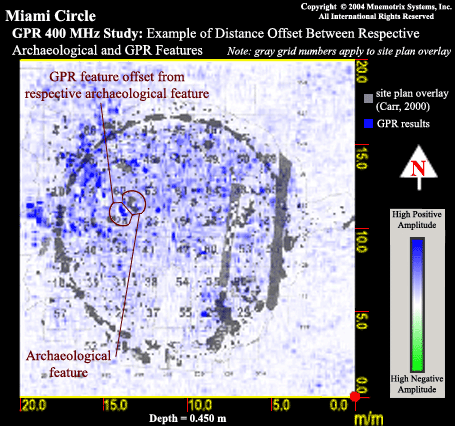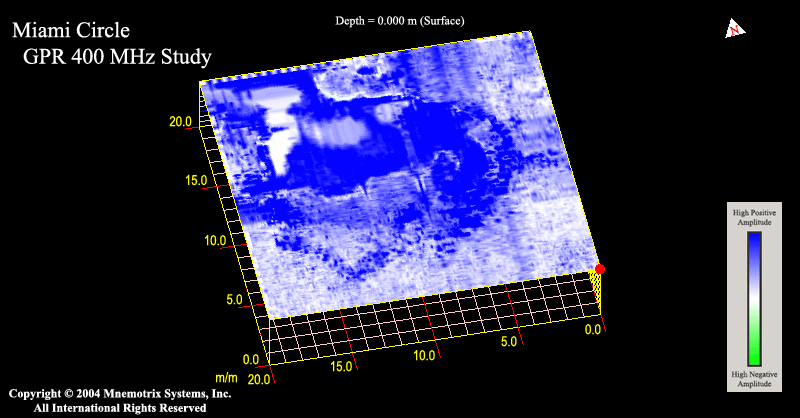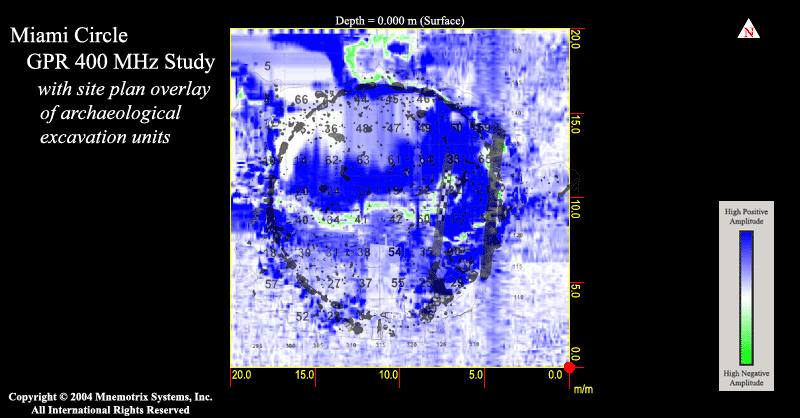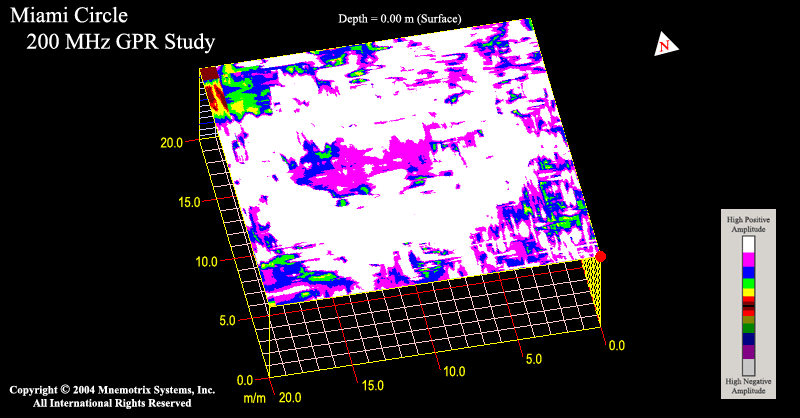Miami Circle, Miami, Florida
GPR Study 2004, Reverse Ground Truth Study
Abstract and Figures

Miami Circle at Brickell Point
Imaging Sub-surface Features of the Miami Circle with Ground Penetrating Radar
Jessie Pincus, Robert S. Carr, Dean Whitman
Abstract for paper presented at University of Arizona, Sept 2004
